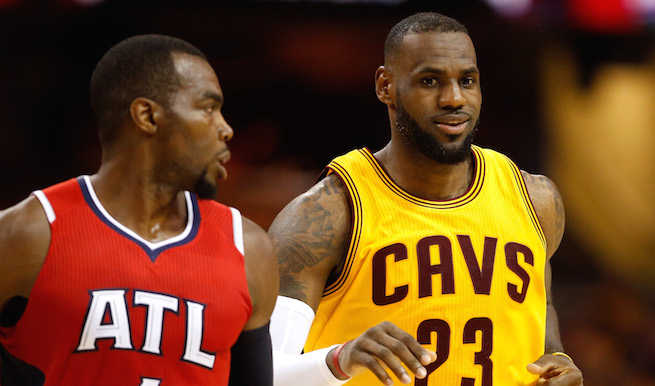
Each year when players sign massive contracts as free agents there’s significant sticker shock to seeing the amount of money being given out. As the salary cap balloons under the new TV deal and with contracts now topping the $30 million mark annually and five-year extensions topping $200 million, it’s stunning to see the amount of money players are making.
However, as everyone knows, you don’t simply take home your full salary each year. Uncle Sam takes plenty in taxes, as do many states in various amounts, so the list of players with the most net income does not always line up with those with the most gross income. For the 2017-18 season, ESPN put together a list of the highest paid players and compared their gross and net income.
For the most part, its names you would expect near the top of the list, although Paul Millsap showing up at No. 2 overall came as a bit of a surprise — he’s No. 3 on gross income, so maybe it shouldn’t have been. Unsurprisingly, the list is filled with players that have signed contracts or extensions over the past couple of seasons and will certainly change in the near future. Below, you’ll find the top 10 list and their net incomes, but for the full breakdown of how much each player loses to taxes, click here.
10. Kyle Lowry: $12,047,641 net ($28,703,704 gross)
9. Blake Griffin: $14,234,341 net ($29,512,900 gross)
8. Al Horford: $14,257,262 net ($27,735,405 gross)
7. Gordon Hayward: $14,747,006 net ($29,727,900 gross)
6. Russell Westbrook: $14,773,931 ($28,530,608 gross)
5. James Harden: $15,141,780 ($28,299,399 gross)
4. Mike Conley: $15,254,008 net ($28,530,608 gross)
3. Steph Curry: $15,263,905 net ($34,682,550 gross)
2. Paul Millsap: $15,563,401 net ($30,769,231 gross)
1. LeBron James: $16,737,751 net ($33,285,709 gross)
The best example of how different state taxes have an effect on take home salary is with Conley and Westbrook, who have identical gross salaries, but Conley takes home nearly $500,000 more by living in a place with a 2.2% income tax for the city and state compared to 4.47% like in Oklahoma City. You can also see how living in California and Canada, places with significant city/state taxes (over 15% in Canada and over 11% in California) has a major impact in the difference between gross and net income.
This is why when free agency rolls around each year people start talking about teams in Texas and Florida, states without an income tax, having a bit of an advantage when talking to max players. Now, this obviously hasn’t kept teams in California from signing stars, but there is something to be said about players being able to take home more than 50% of their gross salary compared to, say, 44% in the Bay Area or 42% in Toronto. The Warriors players don’t seem concerned about that seeing as they’re all winning and winning a lot, but in Toronto it is a battle to get free agents for a few reasons, but the taxes certainly don’t help sway free agents in that direction.






